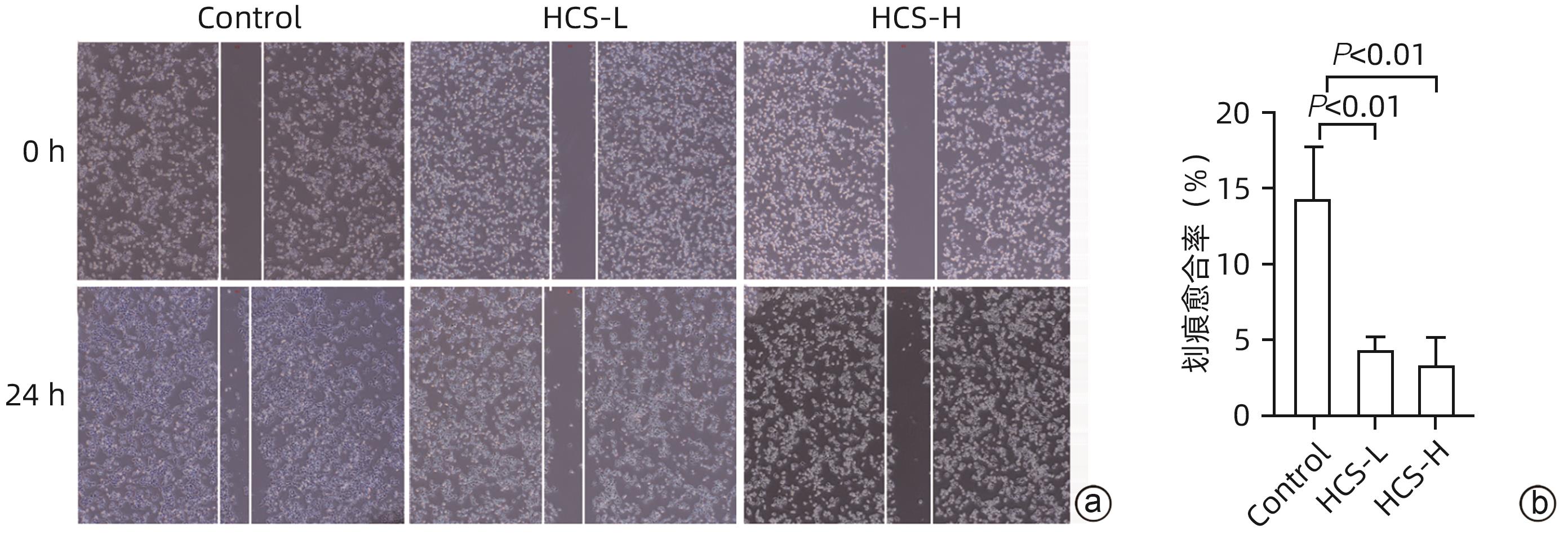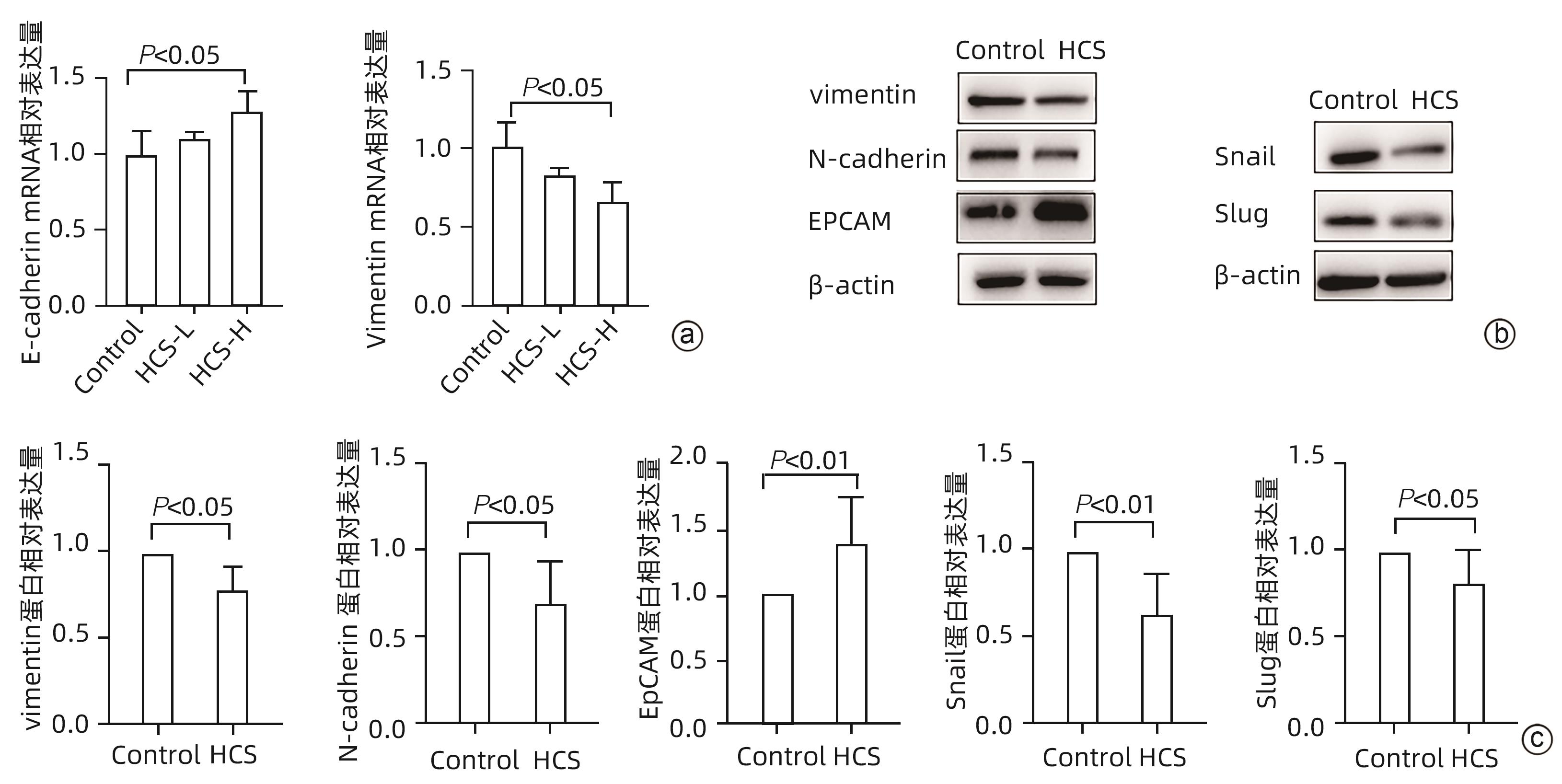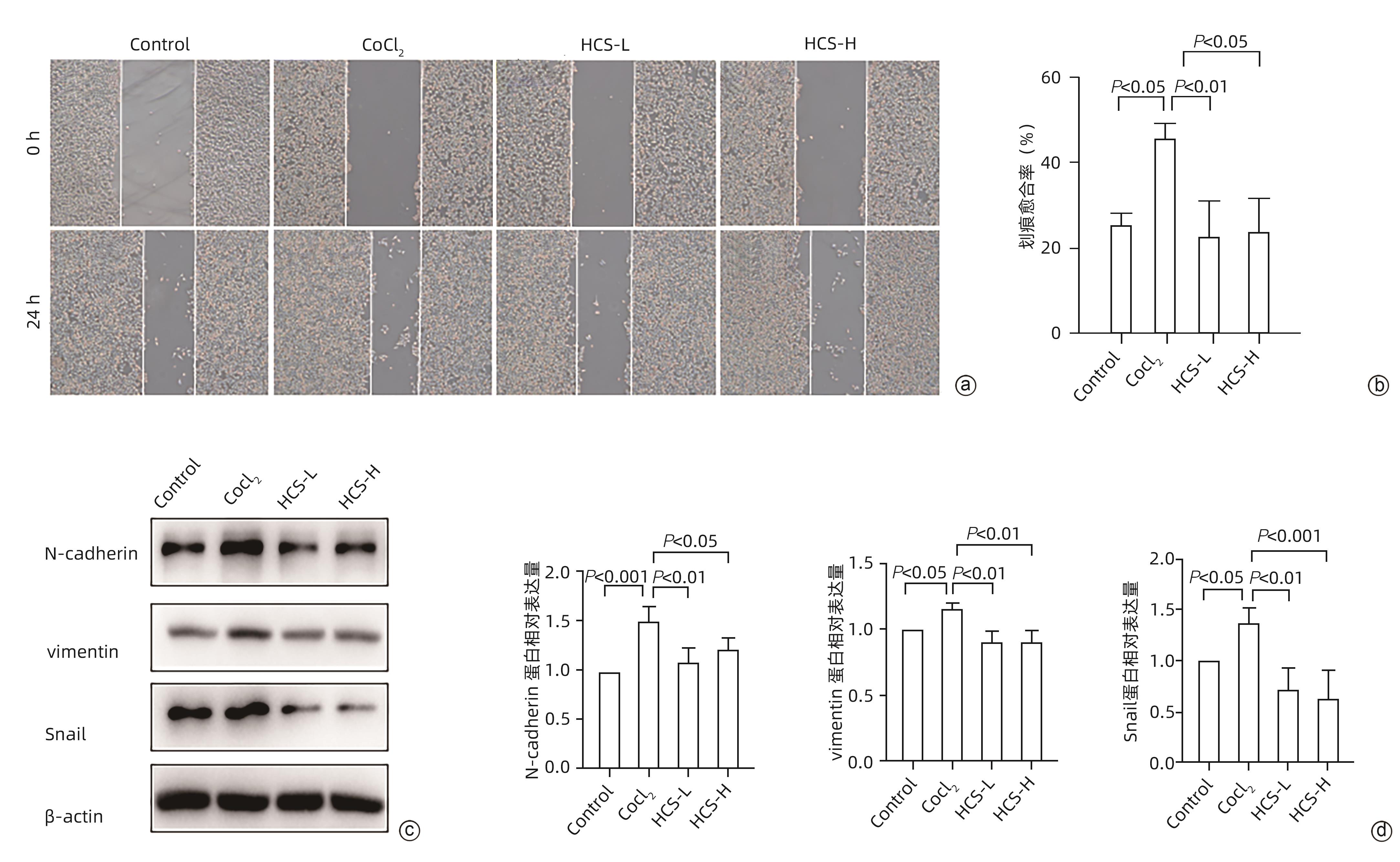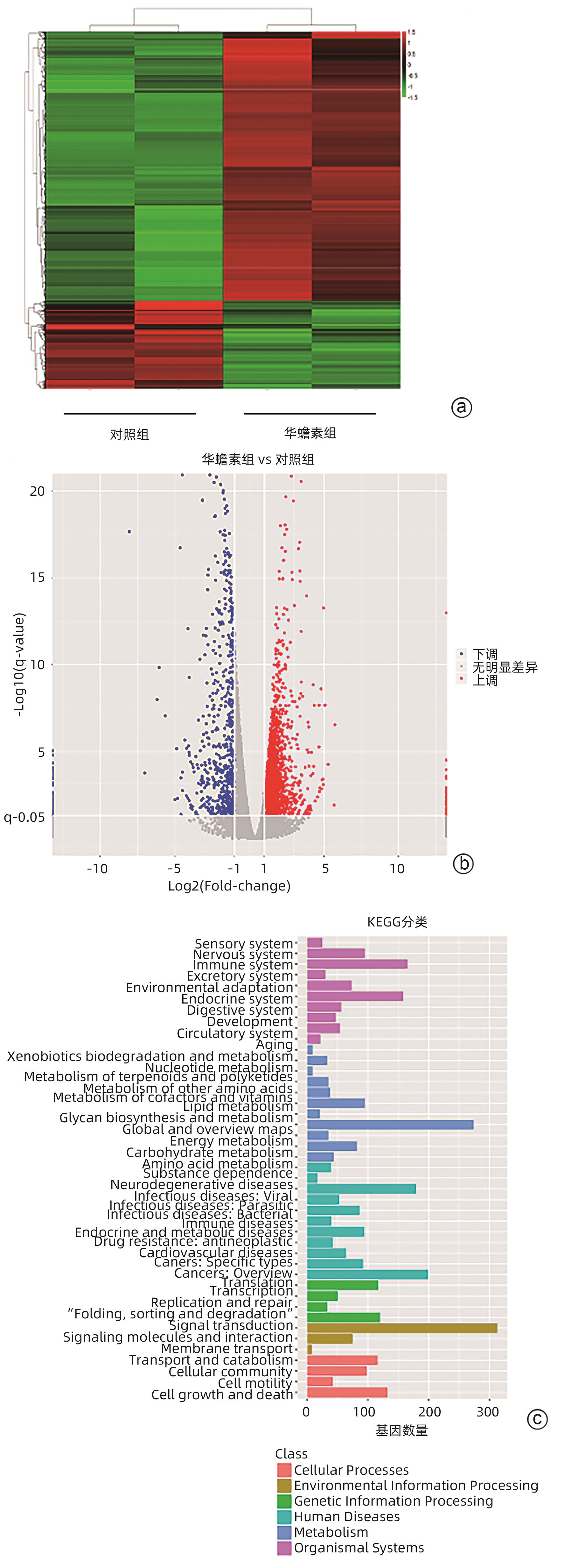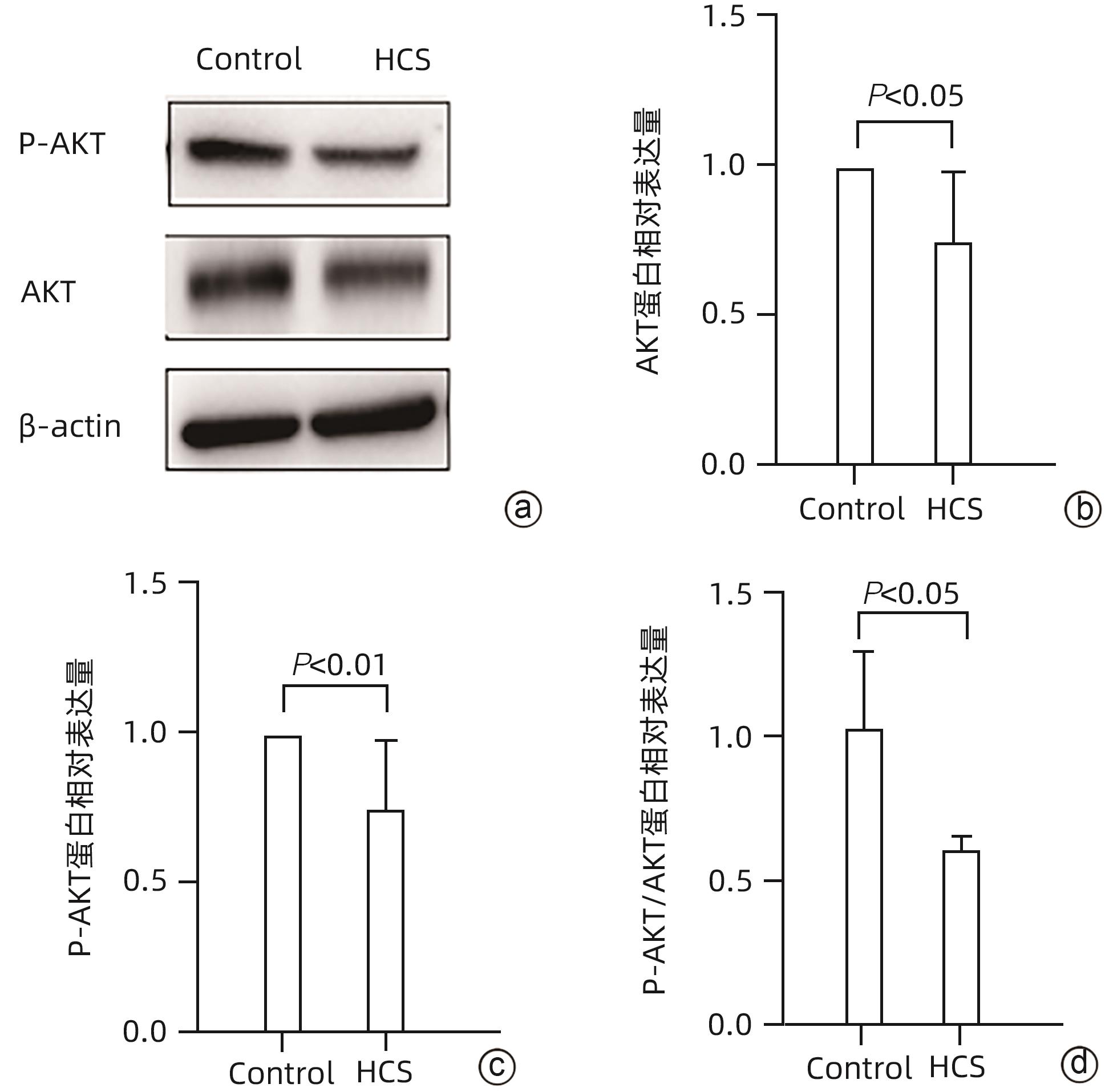| [1] |
Prospective suRveillance for very Early hepatoCellular cARcinoma(PreCar) expert panel. Expert consensus on early screening strategies for liver cancer in China[J]. Chin Hepatol, 2021, 26( 8): 825- 831. DOI: 10.3969/j.issn.1008-1704.2021.08.001. |
| [2] |
KONYN P, AHMED A, KIM D. Current epidemiology in hepatocellular carcinoma[J]. Expert Rev Gastroenterol Hepatol, 2021, 15( 11): 1295- 1307. DOI: 10.1080/17474124.2021.1991792. |
| [3] |
CHIN KM, ALLEN JC, TEO JY, et al. Predictors of post-hepatectomy liver failure in patients undergoing extensive liver resections for hepatocellular carcinoma[J]. Ann Hepatobiliary Pancreat Surg, 2018, 22( 3): 185- 196. DOI: 10.14701/ahbps.2018.22.3.185. |
| [4] |
ZHANG YT, LI BP, ZHANG B, et al. LncRNA SBF2-AS1 promotes hepatocellular carcinoma metastasis by regulating EMT and predicts unfavorable prognosis[J]. Eur Rev Med Pharmacol Sci, 2018, 22( 19): 6333- 6341. DOI: 10.26355/eurrev_201810_16044. |
| [5] |
PASTUSHENKO I, BLANPAIN C. EMT transition states during tumor progression and metastasis[J]. Trends Cell Biol, 2019, 29( 3): 212- 226. DOI: 10.1016/j.tcb.2018.12.001. |
| [6] |
ZHANG G, ZHANG GY. Upregulation of FoxP4 in HCC promotes migration and invasion through regulation of EMT[J]. Oncol Lett, 2019, 17( 4): 3944- 3951. DOI: 10.3892/ol.2019.10049. |
| [7] |
HUANG YH, HONG WQ, WEI XW. The molecular mechanisms and therapeutic strategies of EMT in tumor progression and metastasis[J]. J Hematol Oncol, 2022, 15( 1): 129. DOI: 10.1186/s13045-022-01347-8. |
| [8] |
SHEN JJ. The clinical effect of Cinobufagin injection by transcatheter arterial chemoembolization(TACE) combined with intravenous on treating primary liver cancer(PLC)[J]. J Clin Hepatol, 2009, 25( 3): 207- 209. DOI: 10.3969/j.issn.1001-5256.2009.03.018. |
| [9] |
YU T, ZHAI XF, LIU Q, et al. Clinical effect and safety of hepatic arterial infusion of cinobufotalin injection combined with lipiodol chemoembolization in treatment of Barcelona Clinic Liver Cancer stage C primary liver cancer[J]. J Clin Hepatol, 2017, 33( 2): 281- 285. DOI: 10.3969/j.issn.1001-5256.2017.02.015. |
| [10] |
CHENG L, CHEN YZ, PENG Y, et al. Ceramide production mediates cinobufotalin-induced growth inhibition and apoptosis in cultured hepatocellular carcinoma cells[J]. Tumour Biol, 2015, 36( 8): 5763- 5771. DOI: 10.1007/s13277-015-3245-1. |
| [11] |
LI WQ, PEI SH, ZHANG XJ, et al. Cinobufotalin inhibits the epithelial-mesenchymal transition of hepatocellular carcinoma cells through down-regulate β-catenin in vitro and in vivo[J]. Eur J Pharmacol, 2022, 922: 174886. DOI: 10.1016/j.ejphar.2022.174886. |
| [12] |
YANG SY, ZHANG JJ, HUANG XY. Mouse models for tumor metastasis[J]. Methods Mol Biol, 2012, 928: 221- 228. DOI: 10.1007/978-1-62703-008-3_17. |
| [13] |
ZHU L, CHEN YX, WEI C, et al. Anti-proliferative and pro-apoptotic effects of cinobufagin on human breast cancer MCF-7 cells and its molecular mechanism[J]. Nat Prod Res, 2018, 32( 4): 493- 497. DOI: 10.1080/14786419.2017.1315575. |
| [14] |
YUAN ZT, SHI XJ, QIU YY, et al. Reversal of P-gp-mediated multidrug resistance in colon cancer by cinobufagin[J]. Oncol Rep, 2017, 37( 3): 1815- 1825. DOI: 10.3892/or.2017.5410. |
| [15] |
GUO N, MIAO YY, SUN MZ. Transcatheter hepatic arterial chemoembolization plus cinobufotalin injection adjuvant therapy for advanced hepatocellular carcinoma: A meta-analysis of 27 trials involving 2, 079 patients[J]. Onco Targets Ther, 2018, 11: 8835- 8853. DOI: 10.2147/OTT.S182840. |
| [16] |
CHEN Z, CHEN HY, LANG QB, et al. Preventive effects of Jiedu Granules combined with cinobufacini injection versus transcatheter arterial chemoembolization in post-surgical patients with hepatocellular carcinoma: A case-control trial[J]. Chin J Integr Med, 2012, 18( 5): 339- 344. DOI: 10.1007/s11655-012-1083-1. |
| [17] |
WEI YH, YANG CX, YANG GM, et al. Inhibitory effect of downregulating HMGB2 expression on epithelial-mesenchymal transition of liver cancer LM3 cells and its AKT/m TOR signaling pathway mechanism[J]. J Jilin Univ Med Ed, 2024, 50( 1): 143- 149. DOI: 10.13481/j.1671-587X.20240118. |
| [18] |
HAY ED. An overview of epithelio-mesenchymal transformation[J]. Acta Anat, 1995, 154( 1): 8- 20. DOI: 10.1159/000147748. |
| [19] |
DUDAS J, LADANYI A, INGRUBER J, et al. Epithelial to mesenchymal transition: A mechanism that fuels cancer radio/chemoresistance[J]. Cells, 2020, 9( 2): 428. DOI: 10.3390/cells9020428. |
| [20] |
ZHANG Y, WEINBERG RA. Epithelial-to-mesenchymal transition in cancer: Complexity and opportunities[J]. Front Med, 2018, 12( 4): 361- 373. DOI: 10.1007/s11684-018-0656-6. |
| [21] |
AIELLO NM, MADDIPATI R, NORGARD RJ, et al. EMT subtype influences epithelial plasticity and mode of cell migration[J]. Dev Cell, 2018, 45( 6): 681- 695. e 4. DOI: 10.1016/j.devcel.2018.05.027. |
| [22] |
VAUPEL P, MAYER A, HÖCKEL M. Tumor hypoxia and malignant progression[J]. Methods Enzymol, 2004, 381: 335- 354. DOI: 10.1016/S0076-6879(04)81023-1. |
| [23] |
VAUPEL P, HÖCKEL M, MAYER A. Detection and characterization of tumor hypoxia using PO2 histography[J]. Antioxid Redox Signal, 2007, 9( 8): 1221- 1235. DOI: 10.1089/ars.2007.1628. |
| [24] |
LIU ZK, WANG YF, DOU CW, et al. Hypoxia-induced up-regulation of VASP promotes invasiveness and metastasis of hepatocellular carcinoma[J]. Theranostics, 2018, 8( 17): 4649- 4663. DOI: 10.7150/thno.26789. |
| [25] |
JU SW, WANG F, WANG YR, et al. CSN8 is a key regulator in hypoxia-induced epithelial-mesenchymal transition and dormancy of colorectal cancer cells[J]. Mol Cancer, 2020, 19( 1): 168. DOI: 10.1186/s12943-020-01285-4. |
| [26] |
CORTI F, NICHETTI F, RAIMONDI A, et al. Targeting the PI3K/AKT/mTOR pathway in biliary tract cancers: A review of current evidences and future perspectives[J]. Cancer Treat Rev, 2019, 72: 45- 55. DOI: 10.1016/j.ctrv.2018.11.001. |
| [27] |
LUO H, YU YY, CHEN HM, et al. The combination of NVP-BEZ235 and rapamycin regulates nasopharyngeal carcinoma cell viability and apoptosis via the PI3K/AKT/mTOR pathway[J]. Exp Ther Med, 2019, 17( 1): 99- 106. DOI: 10.3892/etm.2018.6896. |
| [28] |
WU DM, ZHANG T, LIU YB, et al. The PAX6-ZEB2 axis promotes metastasis and cisplatin resistance in non-small cell lung cancer through PI3K/AKT signaling[J]. Cell Death Dis, 2019, 10( 5): 349. DOI: 10.1038/s41419-019-1591-4. |
| [29] |
LIU M, HUANG XD, HAN Z, et al. Effect of cadherin-17 on proliferation and apoptosis of colorectal cancer cells and its PI3K/AKT/mTOR signaling pathway regulatory mechanism[J]. J Jilin Univ(Med Ed), 2023, 49( 4): 1008- 1017. DOI: 10.13481/j.1671-587X.20230423. |
| [30] |
XU T, ZHANG R, DONG ML, et al. Osteoglycin(OGN) inhibits cell proliferation and invasiveness in breast cancer via PI3K/akt/mTOR signaling pathway[J]. Onco Targets Ther, 2019, 12: 10639- 10650. DOI: 10.2147/OTT.S222967. |
| [31] |
YEH YH, WANG SW, YEH YC, et al. Rhapontigenin inhibits TGF-β-mediated epithelial-mesenchymal transition via the PI3K/AKT/mTOR pathway and is not associated with HIF-1α degradation[J]. Oncol Rep, 2016, 35( 5): 2887- 2895. DOI: 10.3892/or.2016.4664. |
| [32] |
LI CY, WANG Q, WANG XM, et al. Scutellarin inhibits the invasive potential of malignant melanoma cells through the suppression epithelial-mesenchymal transition and angiogenesis via the PI3K/Akt/mTOR signaling pathway[J]. Eur J Pharmacol, 2019, 858: 172463. DOI: 10.1016/j.ejphar.2019.172463. |
| [33] |
WANG HY, ZHANG CY, XU LT, et al. Bufalin suppresses hepatocellular carcinoma invasion and metastasis by targeting HIF-1α via the PI3K/AKT/mTOR pathway[J]. Oncotarget, 2016, 7( 15): 20193- 20208. DOI: 10.18632/oncotarget.7935. |
| [34] |
XING SP, YU WX, ZHANG XF, et al. Isoviolanthin extracted from Dendrobium officinale reverses TGF-β1-mediated Epithelial⁻Mesenchymal transition in hepatocellular carcinoma cells via deactivating the TGF-β/smad and PI3K/akt/mTOR signaling pathways[J]. Int J Mol Sci, 2018, 19( 6): 1556. DOI: 10.3390/ijms19061556. |
| [35] |
GHALALI A, YE ZW, HÖGBERG J, et al. PTEN and PHLPP crosstalk in cancer cells and in TGFβ-activated stem cells[J]. Biomed Pharmacother, 2020, 127: 110112. DOI: 10.1016/j.biopha.2020.110112. |









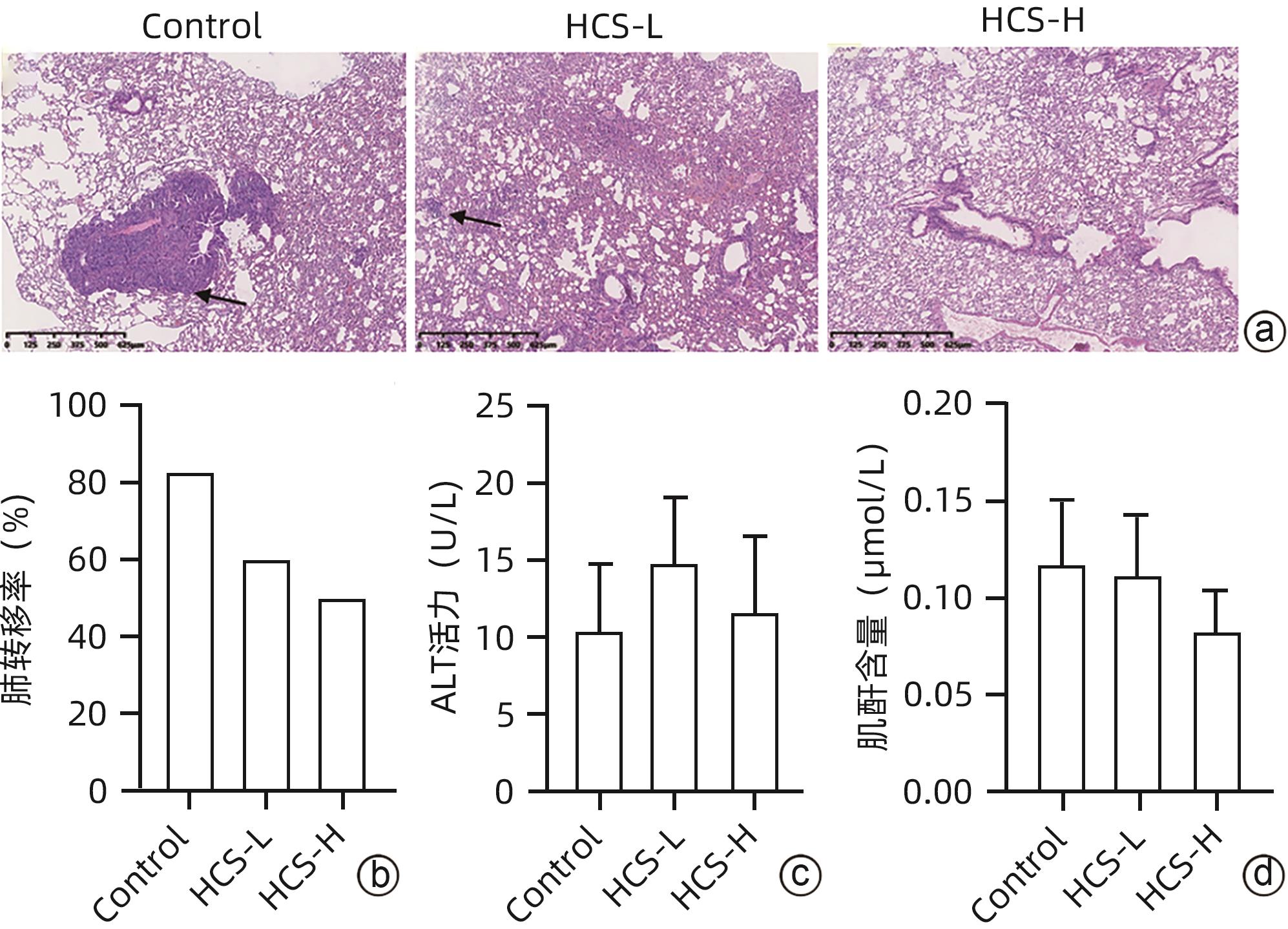




 DownLoad:
DownLoad:
